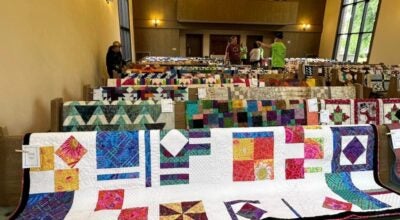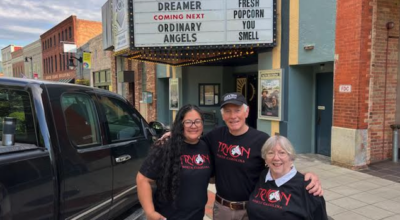Sweet Grass Farm receives $6,000 grant
Published 6:35 pm Friday, February 10, 2012
Smith’s Sweet Grass Farm sits on part of the 397 acres that once made up Smith’s Dairy Farm. Randy’s great-grandmother purchased the property, located in Columbus, just before WWII. His grandfather, Frank Smith, has run the farm since the late 40s. Back then Smith’s Dairy Farm milked cows for Biltmore Dairy. The family kept up the business until the 1970s, when they switched to beef cattle. Randy now dreams of enhancing the farm’s profitability so he can carry on that family legacy. He and his wife Megan currently both keep full-time jobs and run their portion of the farm – raising chickens, cows and various other animals in between.
“We’re inspired by him [Frank Smith] to keep the farm going and share healthy farming with other people who may not know as much about how their food is raised,” said Megan.
She said they are also very passionate about ensuring their animals live a good life, are grass fed and are treated humanely.
“When you start raising animals in an unnatural way, you are going to get unnatural results,” Randy said. “We don’t want that with the meat we produce.”
The Smiths plan to use their $6,000 to implement a process known as managed intensive grazing, or MIG, for their cattle.
Randy Smith said The Journal of Dairy Sciences defines MIG as “A flexible approach to rotational grazing management whereby animal nutrient demand through the grazing season is balanced with forage supply, and available forage is allocated on animal requirements.”
MIG not only sustains the land, but it enhances it as well, Randy said. With MIG the cattle are confined in temporary, lush and forage-diversified paddocks that vary in size based on the number of cattle and available forage for that time frame.
A single strand of electrified wire will serve as the cattle’s boundary to the next paddock, keeping them from eating the grasses in the surrounding areas. The forage height in each paddock is then monitored so that when the cattle are moved to that paddock the forage is at its peak nutritional stage.
This also keeps the forage or grasses well sustained because it prevents the animals from eating the forage down so low that root growth is stunted, thereby losing nutritional value.
By the time the Smiths have rotated their cattle through all the paddocks, their goal is for the first paddock used to be back at its optimal nutritional level, so that by fall and winter little to no hay is needed.
This regrowth will also be aided by the planting of clover, which will replenish the soil with nitrogen, and by the natural fertilization the cows will supply.




